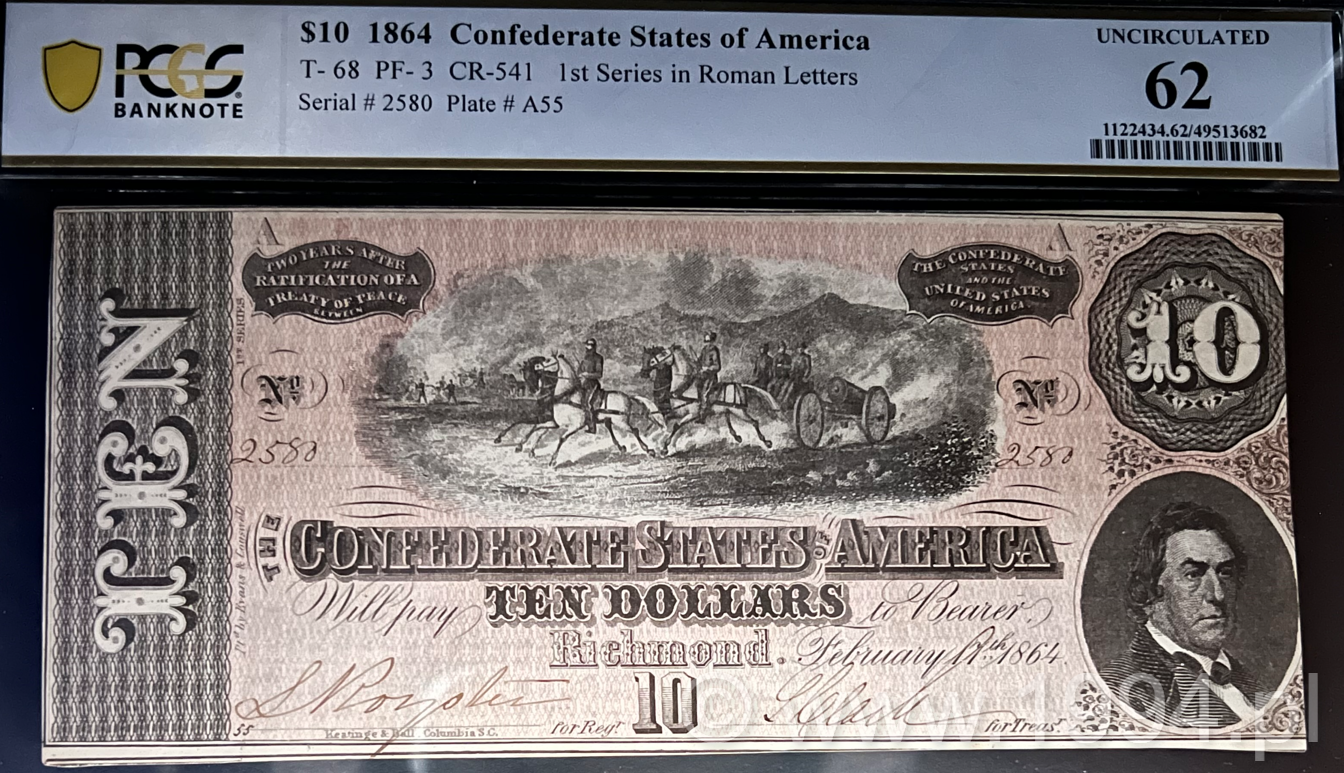Description and research notes
The ten-dollar note of the February 17, 1864 issue, cataloged as T-68 (Criswell 541), was among the final wartime emissions of the Confederate Treasury. Printed in Richmond, Virginia, by Keatinge & Ball of Columbia, South Carolina, it forms part of the most widely recognized Confederate paper-money design family—distinguished by pink underprint, detailed engraving, and complex typography produced under severe wartime constraints.
The central vignette depicts Confederate artillery and cavalry maneuvering on the battlefield, a composition drawn from an original steel engraving used by the American Bank Note Company before the war. At lower right appears the portrait of R.M.T. Hunter, Confederate Senator and Secretary of State, whose inclusion symbolized the government’s intellectual leadership rather than its military command. The decorative panel on the left displays the word TEN in vertical Roman letters, while a large guilloche 10 counter anchors the right margin.
The obligation text at center—'Two years after the ratification of a treaty of peace between the Confederate States and the United States of America'—captures the desperate optimism of the Confederacy’s final year, envisioning a peace treaty that never came. Notes of this series were payable in that hypothetical future, underscoring the speculative nature of Confederate finance by 1864.
The 'First Series in Roman Letters' variety differs from later issues that adopted Gothic type. Each note was individually numbered and hand-signed by Confederate clerks, with the engraved date 'Richmond, February 17, 1864' printed below. Serial 2580 and Plate A55 identify this example as an early plate-pairing in the production run.
Certified PCGS Banknote 62 Uncirculated, this piece retains crisp original paper, bright pink tint, and bold signatures. It exemplifies the transitional artistry of Keatinge & Ball’s Confederate presswork—an uneasy blend of northern engraving legacy and southern improvisation under blockade. As a financial artifact, it bridges numismatic study with the broader human story of a nation in decline, issuing paper promises in the final months of its existence.
